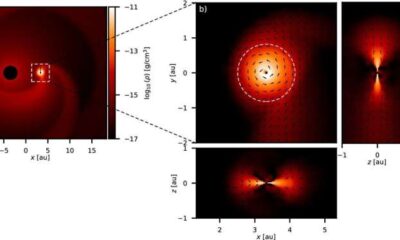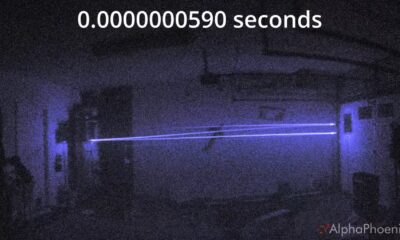Health
iPhone Feature Aims to Reduce Carsickness with Visual Cues

Feeling nauseous while reading in a vehicle is a common experience for many, but a new feature on iPhones may offer some relief. The feature, known as Vehicle Motion Cues, overlays moving dots on the screen to help align visual input with the body’s sense of motion, potentially reducing the effects of carsickness.
Understanding Motion Sickness
Motion sickness occurs when there is a disconnect between what the eyes see and what the inner ear senses. According to the Cleveland Clinic, this condition can be explained by two primary theories: the “postural instability theory” and the “sensory conflict theory.” The latter, which is also favored by the Centers for Disease Control and Prevention (CDC), suggests that the discrepancy between sensory inputs triggers nausea.
The inner ear, specifically the vestibular system, plays a critical role in maintaining balance. It contains fluid that moves with head and body motions. When you are in a moving vehicle and focus on something inside, like a book or phone, your inner ear senses movement but your eyes do not perceive it in the same way, leading to a sensory conflict. As a solution, the Cleveland Clinic recommends looking at distant objects or the horizon to help restore equilibrium.
Exploring Apple’s Solution
Apple’s Vehicle Motion Cues feature, accessible via System Preferences under Accessibility > Motion, is designed to address this issue. It displays moving circles on either side of the screen, mimicking the speed and direction of the vehicle’s motion. For instance, when the car accelerates, the circles move forward at the same pace as objects outside the window. Conversely, during a turn or when reversing, the circles adjust accordingly.
While Apple has not cited specific scientific research that led to this feature, a study conducted by researchers at the University of Salzburg in 2019 explored a similar concept. Their research showed that using moving visual cues—like bubbles on a screen—could alleviate feelings of motion sickness in participants. Although the study was small-scale, it indicated promise for visual cueing techniques.
User experiences with the Vehicle Motion Cues feature have varied. Some individuals have reported significant improvements in their ability to read in the car, while others did not notice a difference. Anecdotal evidence suggests that this feature may be effective for certain users, offering a new tool for those who struggle with carsickness.
If you tend to experience nausea while reading on the go, consider activating the Vehicle Motion Cues feature on your iPhone. You can set it to activate only when your device detects that you are in a moving vehicle. As more people test this feature, further insights into its effectiveness will likely emerge, providing hope for those who wish to read without discomfort during travel.
-

 Science1 month ago
Science1 month agoOhio State Study Uncovers Brain Connectivity and Function Links
-

 Politics2 months ago
Politics2 months agoHamas Chief Stresses Disarmament Tied to Occupation’s End
-

 Science1 month ago
Science1 month agoUniversity of Hawaiʻi Joins $25.6M AI Project for Disaster Monitoring
-

 Entertainment1 month ago
Entertainment1 month agoMegan Thee Stallion Exposes Alleged Online Attack by Bots
-

 Science4 weeks ago
Science4 weeks agoALMA Discovers Companion Orbiting Giant Star π 1 Gruis
-

 Science2 months ago
Science2 months agoResearchers Challenge 200-Year-Old Physics Principle with Atomic Engines
-

 Entertainment1 month ago
Entertainment1 month agoPaloma Elsesser Shines at LA Event with Iconic Slicked-Back Bun
-

 World1 month ago
World1 month agoFDA Unveils Plan to Cut Drug Prices and Boost Biosimilars
-

 Business1 month ago
Business1 month agoMotley Fool Wealth Management Reduces Medtronic Holdings by 14.7%
-

 Top Stories2 months ago
Top Stories2 months agoFederal Agents Detain Driver in Addison; Protests Erupt Immediately
-

 Entertainment1 month ago
Entertainment1 month agoBeloved Artist and Community Leader Gloria Rosencrants Passes Away
-

 Science2 months ago
Science2 months agoInnovator Captures Light at 2 Billion Frames Per Second







